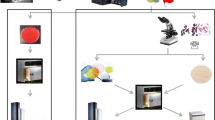Abstract
Shortening the turnaround time of microbiological procedures was associated with an improved clinical outcome in two studies performed in the USA. To study the clinical impact of a shortened turnaround time in a northwest European setting in which an automated system was used for bacterial identification and susceptibility testing, a single-blind, prospective, randomised controlled trial was conducted in a hospital in the Netherlands. All hospitalised patients with a bacterial infection confirmed by culture were randomly assigned to a control (conventional) group or an intervention (rapid) group. Overnight methods were used for identification and susceptibility testing in the control group, while the Vitek 2 system (bioMérieux, Marcy l’Etoile, France) was used in the rapid group. In each of three consecutive study periods, accelerating factors were added progressively to the laboratory workflow of the rapid group to increase same-day reporting, whereas methods remained identical in the conventional group. The turnaround time of the microbiological cycle using the Vitek 2 system as compared to conventional methods was studied and the clinical impact of a shortened turnaround time assessed in terms of mortality, morbidity, and cost. For the rapid groups, the turnaround time was significantly shorter for oral reporting of final susceptibility results in all three study periods and for reporting on paper in the third study period. There was no significant difference between groups in any of the clinical impact variables. Vitek 2 results were available for reporting significantly earlier as compared to conventional testing. For the overall patient group in our hospital setting, however, this had no clinical impact.

Similar content being viewed by others
References
Gyssens IC, Kullberg BJ, van der Meer JW (1999) (Clinical results and costs due to improved antibiotics policies) Klinische effecten en kosten van verbeterd antibioticabeleid. Ned Tijdschr Geneeskd 143:2361–2364
Kreger BE, Craven DE, McCabe WR (1980) Gram-negative bacteremia. IV. Re-evaluation of clinical features and treatment in 612 patients. Am J Med 68:344–355
Kollef MH, Sherman G, Ward S, Fraser VJ (1999) Inadequate antimicrobial treatment of infections: a risk factor for hospital mortality among critically ill patients. Chest 115:462–474
Luna CM, Vujacich P, Niederman MS, Vay C, Gherardi C, Matera J, Jolly EC (1997) Impact of BAL data on the therapy and outcome of ventilator-associated pneumonia. Chest 111:676–685
Weinstein MP, Towns ML, Quartey SM, Mirrett S, Reimer LG, Parmigiani G, Reller LB (1997) The clinical significance of positive blood cultures in the 1990s: a prospective comprehensive evaluation of the microbiology, epidemiology, and outcome of bacteremia and fungemia in adults. Clin Infect Dis 24:584–602
Trenholme GM, Kaplan RL, Karakusis PH, Stine T, Fuhrer J, Landau W, Levin S (1989) Clinical impact of rapid identification and susceptibility testing of bacterial blood culture isolates. J Clin Microbiol 27:1342–1345
Doern GV, Vautour R, Gaudet M, Levy B (1994) Clinical impact of rapid in vitro susceptibility testing and bacterial identification. J Clin Microbiol 32:1757–1762
Barenfanger J, Drake C, Kacich G (1999) Clinical and financial benefits of rapid bacterial identification and antimicrobial susceptibility testing. J Clin Microbiol 37:1415–1418
Gavin PJ, Warren JR, Obias AA, Collins SM, Peterson LR (2002) Evaluation of the Vitek 2 system for rapid identification of clinical isolates of gram-negative bacilli and members of the family Streptococcaceae. Eur J Clin Microbiol Infect Dis 21:869–874
Ligozzi M, Bernini C, Bonora MG, De Fatima M, Zuliani J, Fontana R (2002) Evaluation of the VITEK 2 system for identification and antimicrobial susceptibility testing of medically relevant gram-positive cocci. J Clin Microbiol 40:1681–1686
National Committee for Clinical Laboratory Standards (2000) Performance standards for antimicrobial disk susceptibility tests. Approved standard M2-A7. NCLLS, Wayne, PA
Bruins MJ, Bloembergen P, Ruijs GJ, Wolfhagen MJ (2004) Identification and susceptibility testing of Enterobacteriaceae and Pseudomonas aeruginosa by direct inoculation from positive BACTEC blood culture bottles into Vitek 2. J Clin Microbiol 42:7–11
McCabe WR, Jackson GG (1962) Gram-negative bacteremia I. Etiology and ecology. Arch Intern Med 110:847–855
Munson EL, Diekema DJ, Beekmann SE, Chapin KC, Doern GV (2003) Detection and treatment of bloodstream infection: laboratory reporting and antimicrobial management. J Clin Microbiol 41:495–497
Kuijper EJ, van der Meer J, de Jong MD, Speelman P, Dankert J (2003) Usefulness of Gram stain for diagnosis of lower respiratory tract infection or urinary tract infection and as an aid in guiding treatment. Eur J Clin Microbiol Infect Dis 22:228–234
Granato PA (1993) The impact of same-day tests versus traditional overnight testing. Diagn Microbiol Infect Dis 16:237–243
Cobo J, Oliva J, Sanz J, Aguado JM, Del Pozo J, Moreno S (2003) Influence of microbiological reports on physician’s choice of antimicrobial treatment for susceptible pathogens. Eur J Clin Microbiol Infect Dis 22:569–572
Bruins MJ, Fernandes TM, Ruijs GJ, Wolfhagen MJ, van Rijn-van Berkel JM, Schenk BE, van Duynhoven YT (2003) Detection of a nosocomial outbreak of salmonellosis may be delayed by application of a protocol for rejection of stool cultures. J Hosp Infect 54:93–98
Acknowledgements
We thank Teun Groenendijk for building the study database, Marianne Egbers for managing laboratory logistics, Henk Kroese for his software application, Erwin Booy for downloading data, André Klappe for providing pharmacy data, Helen Klip for her help in data analysis, Stephen Lock for his comments on the manuscript, all laboratory personnel for their hard work and commitment and all hospital personnel for their cooperation. The work was financially supported by bioMérieux and Stichting Zorg op Regionale Grondslag (ZORG).
Author information
Authors and Affiliations
Corresponding author
Rights and permissions
About this article
Cite this article
Bruins, M., Oord, H., Bloembergen, P. et al. Lack of effect of shorter turnaround time of microbiological procedures on clinical outcomes: a randomised controlled trial among hospitalised patients in the Netherlands. Eur J Clin Microbiol Infect Dis 24, 305–313 (2005). https://doi.org/10.1007/s10096-005-1309-7
Published:
Issue Date:
DOI: https://doi.org/10.1007/s10096-005-1309-7




